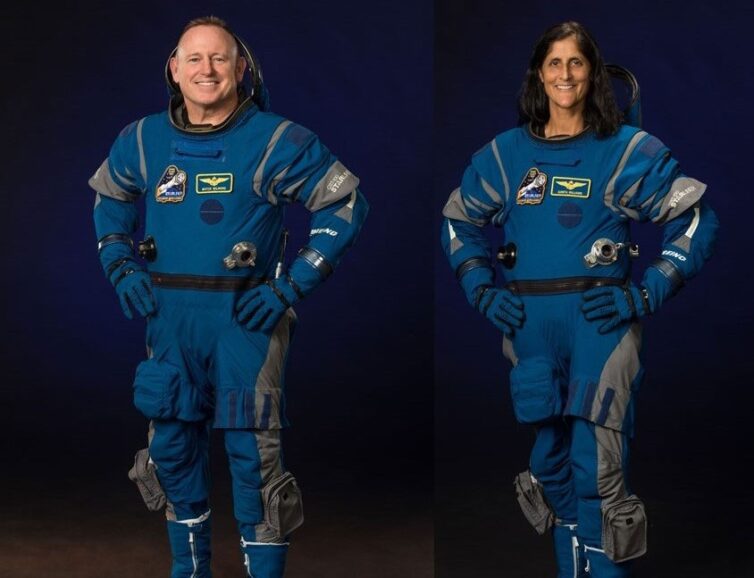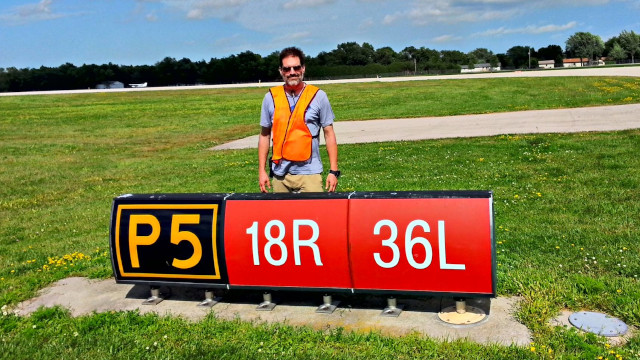A misconception has been spreading in news outlets and on social media about the NASA astronauts who flew the Boeing Starliner, named Calypso, to the International Space Station. Many say they are “stranded in space,” drawing comparisons to airline passengers stuck in unfamiliar airport terminals.
This assumption, however, is incorrect.

1. This is Not Like Airline Passengers
The astronauts are not stranded like airplane passengers left in limbo. The real question at hand was how they would return home. NASA has now decided that the Starliner will return empty, while Wilmore and Williams will come back on the SpaceX CrewDragon. Unlike airline passengers who face uncertainty in unknown airports, these astronauts are highly trained and actively participate in coordinating their mission. It’s more accurate to liken their situation to that of airline pilots waiting for a rescheduled flight at a familiar location, or even test pilots of an aircraft awaiting a repair crew at a remote airstrip. As this flight was the inaugural mission for a new spacecraft, the astronauts fundamentally operated as test pilots, managing Starliner’s systems in collaboration with engineers on the ground. Although a thruster malfunction arose unexpectedly, they remained engaged in their mission.
2. Highly Skilled Assessors
The crew for the Starliner Crew Flight Test (CFT) consists of Barry “Butch” Wilmore and Sunita “Suni” Williams, both of whom share notable similarities in their backgrounds. Prior to becoming astronauts, they were test pilot instructors for the U.S. Navy—Wilmore specializing in fixed-wing aircraft and Williams in helicopters. Both have completed long-duration missions aboard the International Space Station (ISS), each having served as commander during those missions, and are now on their third flight into space.
Wilmore’s spaceflight history includes serving as the second-in-command pilot on the STS-129 mission aboard Space Shuttle Atlantis in 2009, followed by a Soyuz mission to the ISS in 2014. Williams’s first spaceflight came in 2006 on STS-116, with her subsequent mission in 2012 being another long-duration stay on the ISS via Soyuz. Both members were selected for the Starliner CFT crew back in 2020 and have been preparing for this mission for four years while creating procedures and collaborating closely with NASA and Boeing engineers. Their extensive training has included practicing emergency scenarios in simulators, ensuring they are well-equipped to handle any challenges that arise in space.
3. Duration of Flight: Days, Weeks, Months…
The Starliner Crew Flight Test successfully launched on June 5, 2024, after years of delays. Wilmore and Williams named their spacecraft “Calypso” after Jacques Cousteau’s iconic research vessel. The original plan was for the mission to dock with the ISS for several days before returning to any of the possible landing sites across the southwestern United States, depending on weather conditions.
The main responsibility of test pilots lies in assessing how a crafted performs versus design expectations, identifying issues, and collecting data for engineers on Earth to address. However, the failure of multiple thruster rockets during approach to the ISS was unexpected. Testing by Boeing attempted to replicate part of the issue on the ground, but subcontractor Aerojet Rocketdyne had not previously experienced the thruster overheating problem. This situation has prompted further investigation, which indicates that the design may have allowed the thrusters to become too close together, leading to overheating. Nevertheless, Wilmore and Williams are not idle. Both have extensive experience from their previous ISS missions, ensuring they remain active contributors to the station’s maintenance and scientific endeavors despite this unexpected mishap.
4. Lessons from the 2003 Columbia Disaster
NASA’s mission managers faced scrutiny in the wake of the Columbia accident, where their lack of action contributed to the Space Shuttle Columbia disaster on February 1, 2003. The Columbia Accident Investigation Board (CAIB) found that the team missed several opportunities to assess potential damage caused when ice fell from the external tank during launch. If they had checked, it could have led to alternate rescue strategies. Unfortunately, the Columbia was indeed damaged by the debris strike. Although the tragedy was grim, valuable lessons emerged as a result. With lingering concerns regarding the reliability of Starliner’s thrusters for safe re-entry, NASA opted to utilize the SpaceX CrewDragon for the safe return of the Starliner crew, underscoring their rationale for having multiple crew launch vendors available.
The risks associated with the Columbia disaster resonate with me personally. I vividly recall witnessing the smoke trail of Columbia in the pre-dawn sky over Northern California, alongside a dozen others eagerly watching from Mount Hamilton. Although we weren’t familiar with the seven lost astronauts, we felt a profound sense of sorrow, something lacked by those who learned of the tragedy solely through news outlets. Our shared experience lent camaraderie and understanding as we processed our feelings of loss.
Today, amidst Boeing’s ongoing Starliner delays, NASA relies on a single launch vendor, creating a precarious situation. At the time of writing in late August 2024, SpaceX’s Falcon 9 rocket is temporarily grounded due to a first-stage booster mishap during landing at sea. While this grounding is expected to be brief given SpaceX’s track record, it still presents a risk. ISS operations are projected to continue only until 2030, making timely recovery essential for Boeing, which currently lacks new projects in development.
5. NASA’s Decision to Return Starliner Empty
In light of past experiences, NASA has resolved to bring the Starliner back empty. While military test pilots might have opted to take the risk, NASA determined it was more prudent to err on the side of caution, avoiding the unknown risks associated with sending the astronauts back during an unresolved technical issue. Wilmore and Williams will configure the Starliner’s systems for an automated uncrewed return.
Looking ahead, a critical question remains regarding the functionality of the thrusters during re-entry. The spacecraft needs to position its heat shield downward to shield itself from the intense heat generated during re-entry. While redundancy exists within the thruster system to accommodate some failures, a simultaneous thruster failure could jeopardize the vehicle’s ability to maintain the necessary flight attitude. In the worst-case scenario, this could result in the vehicle breaking apart during re-entry.
6. Return via SpaceX CrewDragon
A CrewDragon spacecraft is currently docked at the ISS, but its four available seats are occupied by Crew-8 astronauts. The possibility of returning Wilmore and Williams aboard that Craft, without proper seats and entry suits, would only be contemplated in a dire emergency. Instead, Crew-9 will launch with only two crew members—this opens up two seats for Wilmore and Williams upon arrival at the ISS, enabling them to participate in the Crew-9 six-month mission rotation.
7. Impact on Boeing’s Reputation
The repercussions for Boeing are certainly severe, but recovery remains a possibility. This setback follows closely on the heels of the Boeing 737 MAX incident earlier in 2024, resulting in public scrutiny, regulatory pressure, and even a change in leadership. The ultimate fate of Starliner will determine how this situation is recorded in history. If Calypso successfully returns, Boeing can proceed with the necessary repairs and recoveries. However, if the mission fails, extensive investigations and redesign processes could jeopardize Boeing’s timeline for securing its remaining crew launch contracts before the ISS’s decommissioning in 2030.
Despite these challenges, it is important to note that Boeing’s role in space is far from over. As NASA’s prime contractor for the ISS until 2030, they still play crucial roles in projects like the core stage of NASA’s SLS rocket and a third of the current U.S. GPS satellites. However, without new collaborations, Boeing risks diminishing its space presence, making the success of Starliner even more crucial.
8. NASA’s Commitment to Commercial Launch Success
During the Space Shuttle era, NASA’s crew and cargo launch capabilities were halted for years following both the 1986 Challenger and 2003 Columbia disasters. To avoid similar pitfalls, NASA sought to establish multiple commercial launch vendors to ensure backup capabilities. The agency expanded its commercial cargo partnerships to include a third vendor, Sierra Nevada, which entered the lineup like SpaceX and Northrop Grumman during instances when both others faced grounding.
NASA has shown considerable patience with SpaceX, allowing it to fine-tune its Falcon 9 second stage following a 2014 explosion. This strategy emphasizes the importance of having multiple reliable crew launch vendors so that one can step in for another during times of grounding. However, Boeing’s learning experiences on its crew vehicle demonstrate the need to also require new crew launch vendors to gain cargo experience beforehand.
9. What to Watch For
The crucial question ahead is how the Starliner Calypso will fare during its automated re-entry. Confidence remains regarding SpaceX CrewDragon’s ability to bring the Starliner crew back to Earth safely. SpaceX has developed a proven track record of reliable missions, and the shared experiences gleaned from their early Falcon 9 rockets and CargoDragon spacecraft have created confidence in their operations. The worst-case scenario would be a significant mishap that could cause an extended grounding of SpaceX, creating a gap during which Boeing would not be prepared as a backup. NASA’s timeline indicates that the ISS is planned for operation until 2030, and while potential extensions exist, they will likely be short or not occur at all. The chances for Boeing to secure any additional crew launch contracts for Starliner reside primarily with the successful return of Calypso. Currently, the focus remains within NASA, as Boeing has yet to secure other customers for Starliner crew flights, unlike SpaceX, which has successfully hosted civilian space missions. NASA’s current strategy of employing fixed-price Commercial Crew and Cargo contracts is proving pivotal for building America’s space industry.
It is essential to avoid overreacting to negative critiques of Boeing during these challenging times, as decisions at NASA still hinge on the unfolding situations. NASA maintains a vested interest in supporting multiple launch vendors, which underscores Boeing’s reputation as they strive to recover their airline and spacecraft operations.
Guest post by Ian Kluft – Portland, Oregon
Ian has been passionate about aviation, space, and technology since childhood. With a background in software engineering, he obtained his Private Pilot license during his university studies and later enhanced his skills by becoming a Certified Flight Instructor. His enthusiasm for space has led him to witness rocket launches and solar eclipses. Among his notable achievements is leading Ham Radio-licensed search teams that recovered the first amateur rocket launched to space in Nevada in 2004. For more information, visit his website. He engages on different social media platforms according to topic: aviation as @
ik****@av****.social
on Mastodon (and @ikluft on Twitter); space as @
As*******@sp****.space
on Mastodon (and @AstroHawk on Twitter).

STARLUX Airlines adds Seattle as its third North American destination



